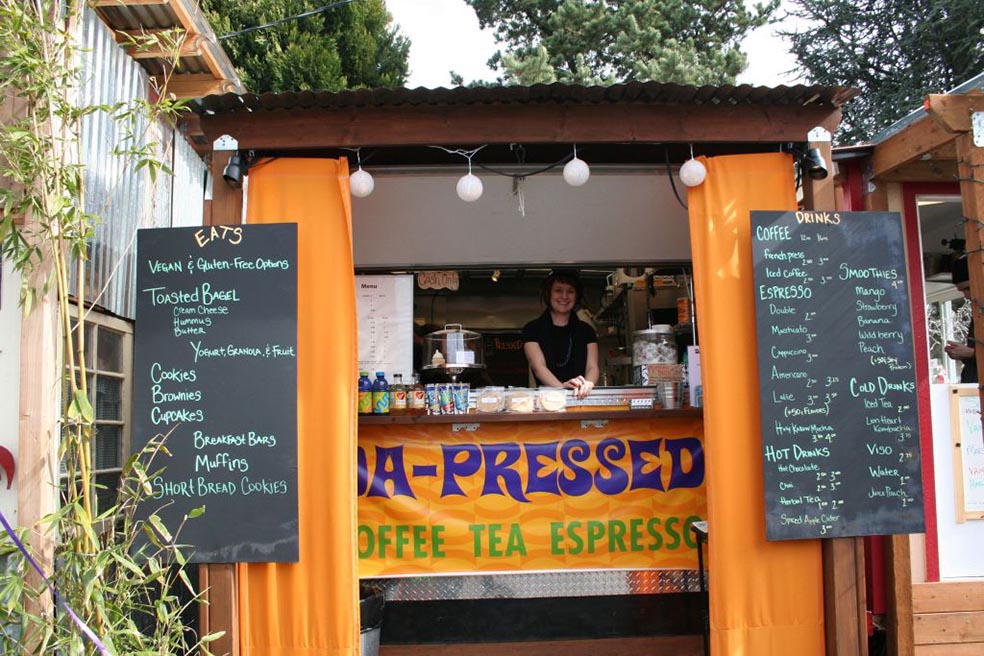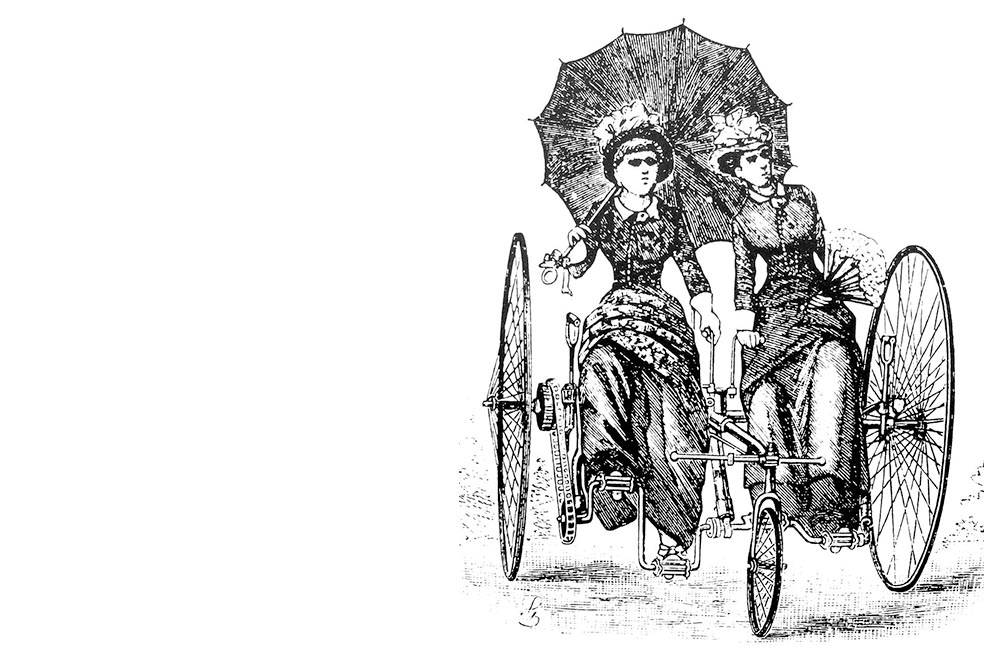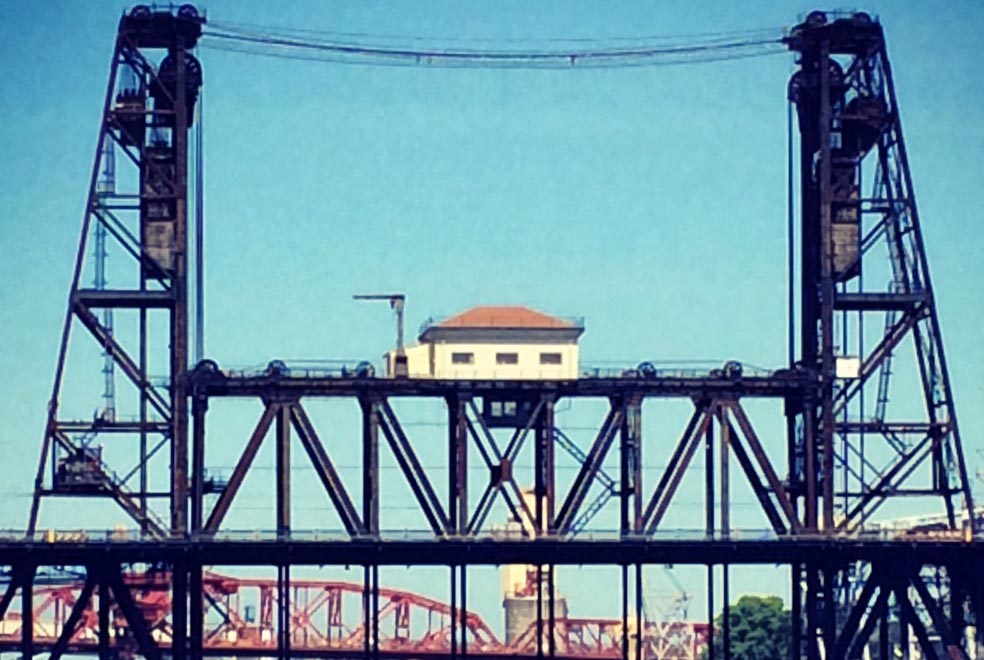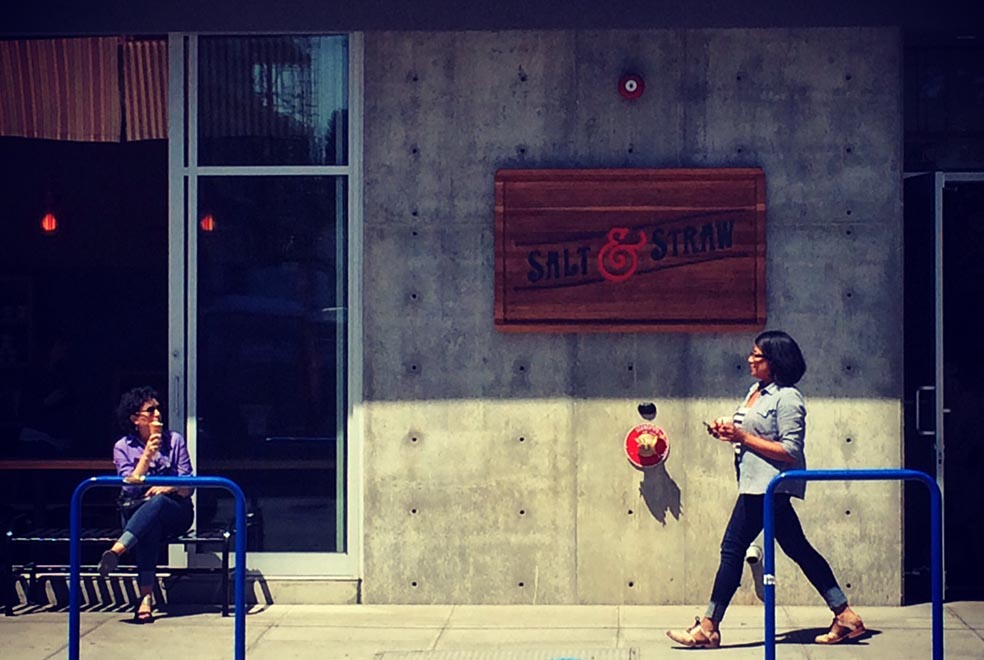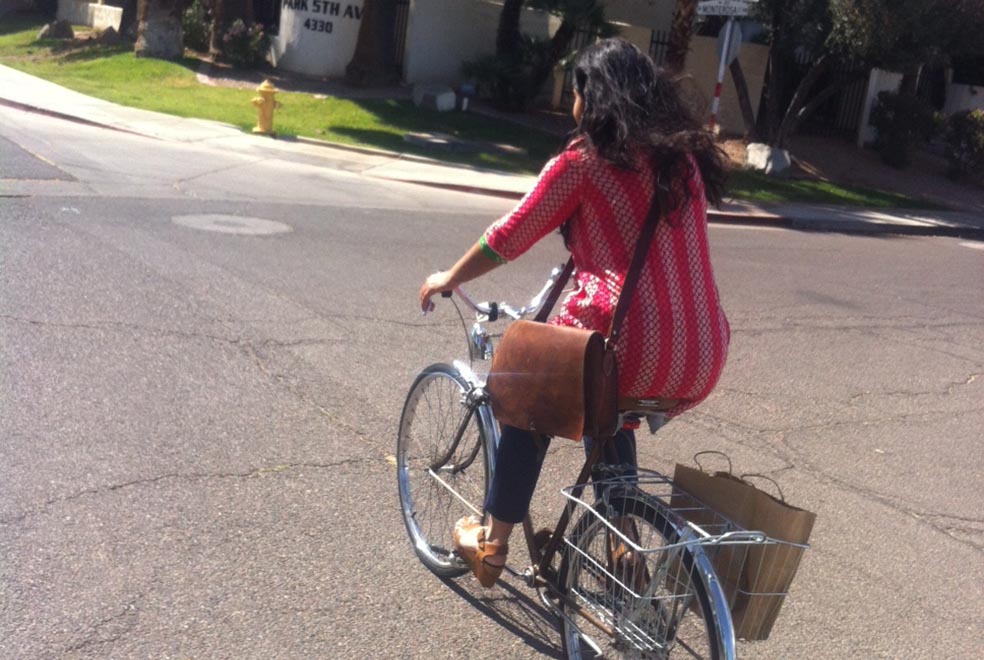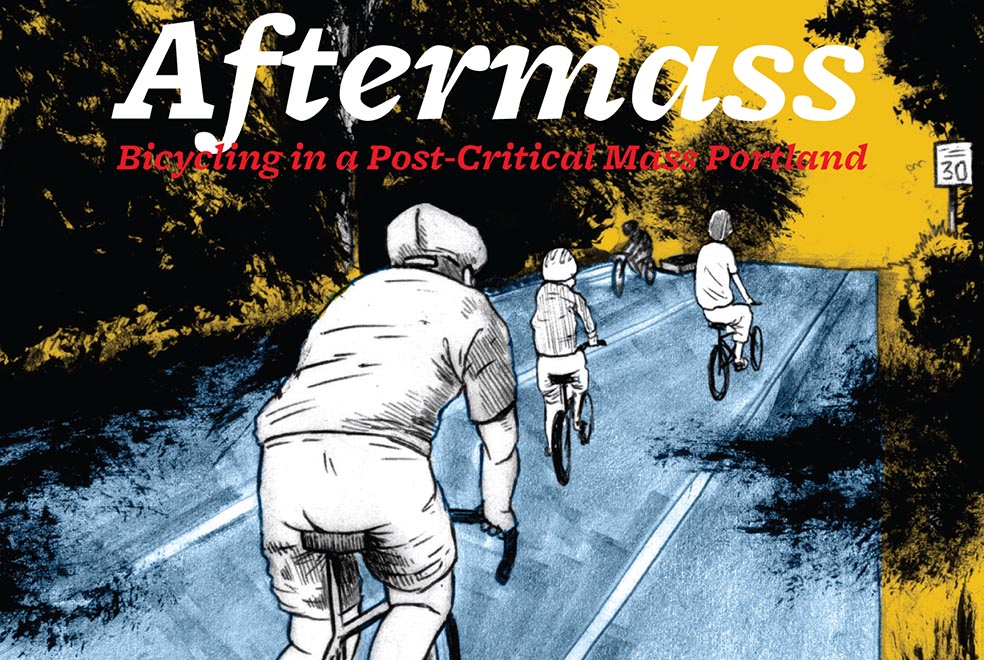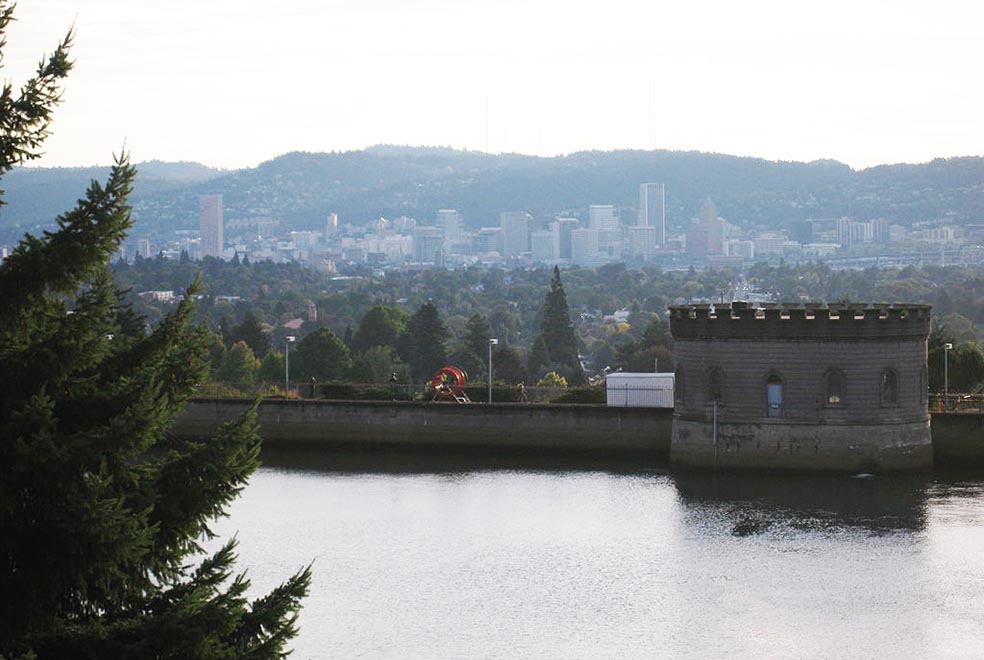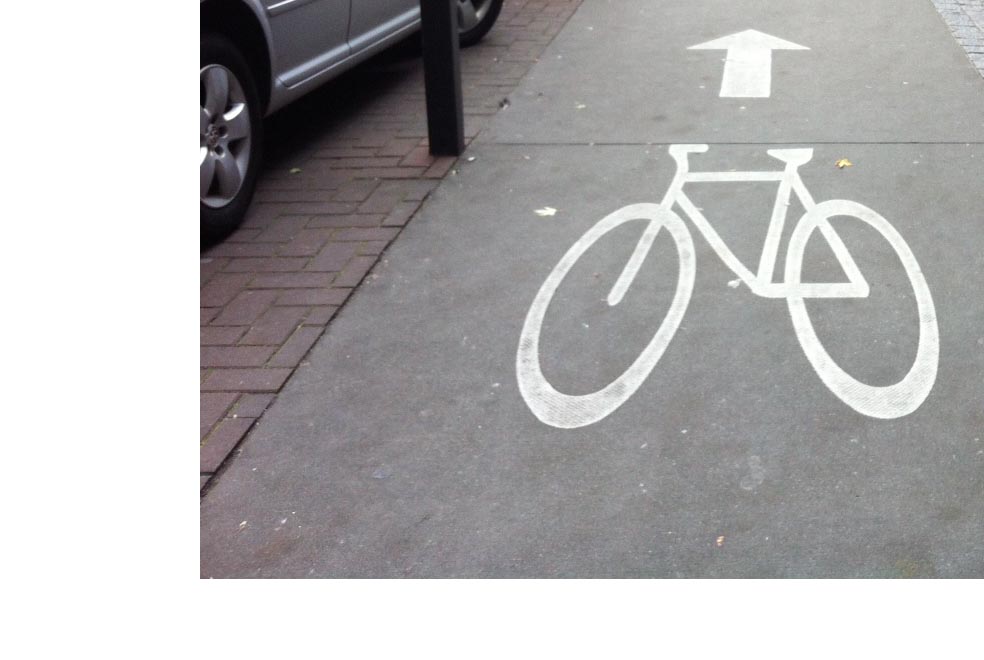Tweet Portland is the birthplace of the food cart pod, a cluster of food carts on an empty lot, usually a parking lot. Food cart pods have become a fixture in the city and new ones seem to be popping up all the time. But more and more, as the development craze is taking over neighborhoods, old and established food cart pods are disappearing too. It’s true that the whole premise of food carts is that they are temporary. Food carts are often used to revitalize a barren empty lot. In a way, they are a victim of their own…
Archive for the ‘urbanism’ Category
Tweet Not unlike women in Saudi Arabia that are banned from riding their bikes in public today, at one time women in the US faced the same kind of resistance to biking as well. The first drop frame bicycles to make it easier for women in skirts to ride came about in the 1890s. But at the same time, male doctors decried the overexertion to delicate female constitutions that was caused by bicycling. And women who rode bikes were often depicted as a little bit crazy and wild. Bicycles were even accused of deflowering younger women, causing spontaneous orgasms, encouraging…
Tweet The Steel Bridge is my favorite bridge in Portland. Did you know that it was built to make it easier for the railroad to get across the Willamette River? Did you know there was a first version of the Steel Bridge built about 20 years before the one we see today? Did you know that the original bridge was the first on the West Coast to use steel for its primary structure? Here are 10 fun facts about the making of the Steel Bridge we know and love today: 1. Before the Steel Bridge was constructed, crossing the Willamette…
Tweet According to some of the comments I received on my article yesterday, Gentrification Hits Home: My Rent Goes Up and the $8 Sundae at Salt & Straw, I AM the problem that I am facing – being priced out of my cute studio near Hawthorne. Because I chose to move to Portland seeking a walkable lifestyle, I am displacing native Oregonians. I guess I should have just stayed in the apartment building in Maputo, Mozambique, the place where my family lived when I was born to avoid displacing other people. But if you go further back than that, I…
Tweet Last week I heard a shuffle at my front door and saw that my building manager was slipping a notice under my door. I opened it only to read that my rent was being raised by 10%! I have lived in this cute little studio in the coveted Sunnyside Neighborhood in inner Southeast Portland for just over a year now. During this time, my rent has gone up a total of 14%. If it continues at this pace, I’ll have to find another place to live because I’ll be priced out of my very walkable, very centrally-located neighborhood. The…
Tweet Subversion: An attempt to transform the established social order and its structures of power, authority, and hierarchy. Subversion (Latin subvertere: overthrow) refers to a process by which the values and principles of a system in place, are contradicted or reversed. – Wikipedia Did you know that women in Saudi Arabia are not only banned from driving, but they are also banned from riding bicycles in public areas? A Saudi official says “women may not use the bikes for transportation but “only for entertainment” and that they should shun places where young men gather “to avoid harassment,” according to Al-Jazeera….
Tweet Neighborhood Greenways have been touted as the best way to make biking safe and appealing on American streets. They are low-cost, at only $250,000 per mile as opposed to $4 to $5 million per mile for cycle tracks, they don’t require heavy modification of existing streets, and they are easy to engineer. The concept of Neighborhood Greenways was developed by Portland Bureau of Transportation’s Greg Raisman and Mark Lear as a feasible way to make bicycling easy and safe for anyone who wants to bike. Having been first implemented in 2009 in Portland, they were widely installed in 2010…
Tweet I moved to Portland from Phoenix essentially for its reputation for bicycling and transit, knowing that I could lead a car free life relatively easily here. But this weekend, I found out that Portland has not always been “America’s Bicycle Capital”. I went to the premier of Aftermass, a movie directed by Microcosm publisher and moviemaker Joe Biel that documents the tenuous beginnings of the bicycling culture in Portland. It reveals, through a series of interviews and historic footage of key events what an uphill battle it’s been to normalize bicycling in this city, starting with Critical Mass bike…
Tweet This morning, the city of Portland issued a boil water notice for 670,000 customers of the Portland Water Bureau after finding traces of E. Coli in two of Mt. Tabor’s open-air reservoirs. This is significant in light of the city’s controversial move towards covering the reservoirs. Would this E. Coli incident have happened if the city had discontinued its open-air reservoirs over 6 years ago when the federal mandate to do so was issued? Portland is currently in the process of shutting down the use of the open-air reservoirs on Mt. Tabor and is constructing new covered reservoirs at…
Tweet When the city of Portland was getting community feedback on its 20s Bikeway Project, it ran into a lot of opposition from businesses along NE 28th Avenue, north of Burnside for adding bike lanes along that stretch. Their beef was with the fact that the added bike lanes would eliminate on-street parking in front of their stores, thereby putting off potential customers. Unfortunately, the mistaken business owners got their way and the new proposed route for the bikeway is two streets over on NE 30th. Be careful what you ask for I say, those very bike lanes they railed…















